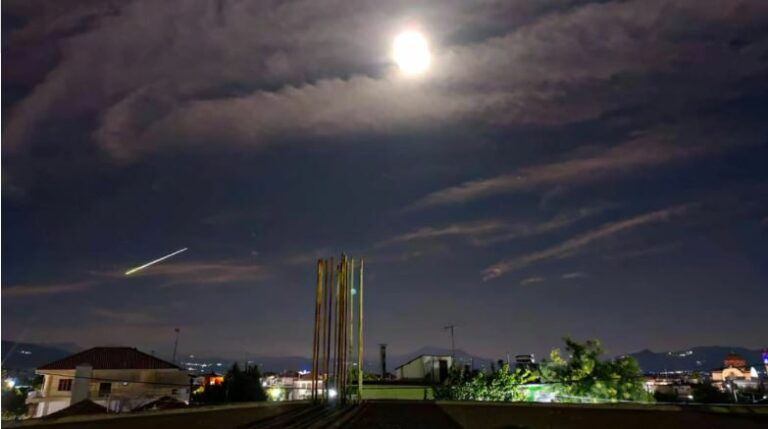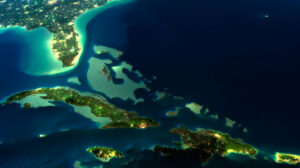The night turned to day in Attica, and the skies lit up when a meteor flew across Greece, Tuesday night.
The phenomenon happened shortly after 23:00 when an impressively bright meteor and specifically a fireball, was recorded by the cameras of kopaida.gr with the shot taken from Livadia looking east.
The meteor became visible from various parts of southern and central Greece. There were many reports of the fall in Attica, Etoloakarnania, Evros, Arcadia and elsewhere.
The meteors that fall to the ground in the early morning hours have the highest speeds and are more difficult to spot, while in the early evening hours they are the slowest. This is because in the early morning hours the Earth’s orbit is added to the speed of the meteors, while in the early evening it is subtracted.
What is a meteor?
In astronomy, a meteor is any light phenomenon that occurs in the Earth’s atmosphere as a result of the entry into it of a meteorite, ie a rocky body that can be from a few millimeters to several meters in size. The movement of the meteorite at high speed and the friction of its surface with the molecules of the atmosphere results in the intense ionization of the air molecules and, usually, the consequent emission of light radiation.
When the meteorite does not fully evaporate into the atmosphere or explode, it reaches the ground and if it is large enough in size it creates a crater. The part of the meteorite that ends up on the ground is called a meteorite.
They appear mainly at an altitude of 120km and, the smallest of them, disappear after travelling 60-80km. They move at speeds of a few tens of kilometers per second. The brightest shooters and fireballs are accompanied by a luminous tail which is maintained for a few minutes after the meteor evaporates. These tails are not always straight and often have ripples or even curves.
It is not possible to calculate the mass they add to our planet but it is generally considered minimal in relation to the mass of the planet.
Ask me anything
Explore related questions





